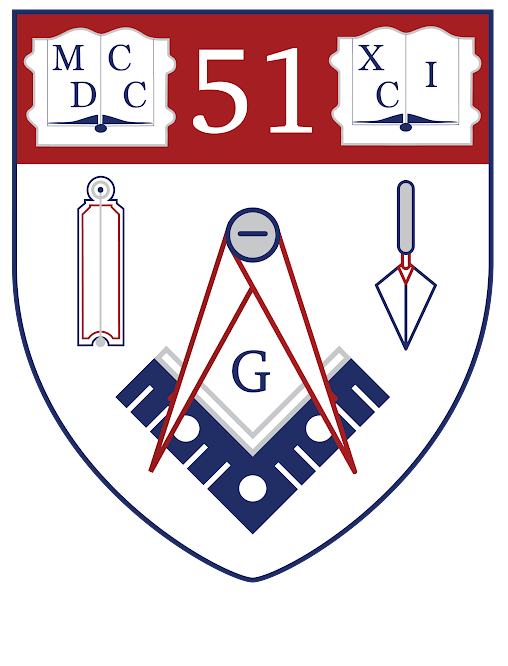The Grand Lodge of Pennsylvania traces its origins to June 5, 1730 when the Right Worshipful Daniel Coxe was appointed by the Grand Lodge of England as the first Provincial Grand Master of the Provinces of New York, New Jersey, and Pennsylvania, residing at Philadelphia. Records show that the R∴ W∴ Brother Coxe went on to found the first duly constituted subordinate Lodge in North America later that year in Philadelphia at the Tun Tavern. On June 24, 1731, the Right Worshipful Brother William Allen succeeded the R∴ W∴ Brother Coxe as Provincial Grand Master of Pennsylvania, and became the first Grand Master of a single province in North America. Because of these facts, Pennsylvania claims to be the third oldest Grand Lodge in the world after England (est. 1717) and Ireland (est. 1725). It is unfortunate that this fact is still disputed by both the Grand Lodge of the Massachusetts (est. 1733), which claims the title for itself and maintains that the R∴ W∴ Brother Coxe was not active in his role as Grand Master despite abundant evidence to the contrary, and the Grand Lodge of Virginia (est. 1778), which was the first independent grand lodge in the United States after the American War of Independence. In 1907, the Grand Lodge of Pennsylvania published the following statement:
There is another subject of much interest, if not importance, to the Craft in Pennsylvania, which has been brought to our attention by a letter from that well known Masonic scholar and antiquarian, Brother Wm. James Hughan, Past Grand Deacon of the Grand Lodge of England, to our Right Worshipful Grand Master Potter, and by him referred to this committee, in relation to the first establishment of Masonry on this continent. For some years prior to 1873 it was considered to be a point settled beyond controversy that the first Masonic Lodge in existence in America was one in Boston, Massachusetts, constituted by Provincial Grand Master Henry Price in 1733. That conclusion had been reached after the question had been carefully investigated by competent authorities and the evidence was accepted as satisfactory by the Fraternity generally. It was admitted that Brother Price was not the first Provincial Grand Master in America, for there was reliable testimony that the Deputation from the Grand Lodge of England to Bro∴ Daniel Coxe as Provincial Grand Master for New Jersey, New York and Pennsylvania, was two years prior to that of Brother Price, but it was asserted that Daniel Coxe had not acted under his deputation, and no evidence was forthcoming to disprove the assertion.
This was the generally received belief until July, 1874, when an article from the pen of Brother Clifford P. MacCalla appeared simultaneously in “The Keystone” and the “London Masonic Magazine”, calling attention to the fact that there were evidences of the existence of a Lodge or Lodges in Philadelphia as early as 1730, and of a Grand Lodge in 1732, to be found in the “Pennsylvania Gazette” for those years, edited and printed by Brother Benjamin Franklin. The evidence of this early newspaper (the existence and authenticity of which cannot be doubted) was entitled to the more weight, as Brother Franklin, the printer, was himself one of the elected Wardens of the Grand Lodge in 1732.
The memorial volume of our New Temple, published shortly after the dedication ceremonies, made a full recapitulation of these facts and also contained a reference to a letter, written in 1754 by Brother Henry Bell, of Lancaster, stating that in 1730 a Lodge in Philadelphia had petitioned the Grand Lodge of England for a charter, but before obtaining it, heard of the Deputation of Daniel Coxe as Provincial Grand Master and had applied to him and their request was granted.
These statements coming from members of our own Grand Lodge, which was so nearly interested in the decision of the question thus raised, were enough to open a new discussion among the antiquarians and historians of the Craft, which is still actively going on. Brother Hughan, who is entirely disinterested and is earnest only to arrive at the truth, has given the subject a careful consideration, and in doing so has discovered an item of evidence, which is peculiarly important in showing that at least one Lodge in Philadelphia, of a date prior to 1731, was recognized by the Fraternity in England as a regularly constituted Lodge.
Thus, it would appear that Pennsylvania’s claim is well-founded. But despite these small disputes over matters historical, the Grand Lodge of Pennsylvania maintains friendly relations with the other fifty-one grand lodges in the United States and her territories (including those of the District of Columbia and the Commonwealth of Puerto Rico), as well as with dozens of foreign grand lodges.
The motto of the Grand Lodge of Pennsylvania is “Virtute, Silentio, Amore” (“By Virtue, In Silence, With Love”). The motto can be found on the Seal of the Grand Lodge of Pennsylvania along with the face of the ancient Greek god Apollo in glory. Apollo represents lux ex tenebris (“light from darkness”), a common theme in Freemasonry, since Apollo is the god of the sun and the offspring of Leto, whose name in Greek means “the great darkness” or “oblivion.”
To learn more about the history of Pennsylvania Freemasonry and the Philadelphia Masonic Temple you can watch the following videos:
Also, please visit the website for the Grand Lodge of Pennsylvania, HERE.
